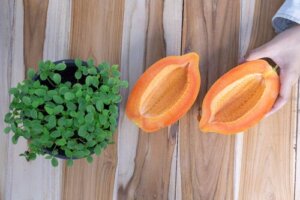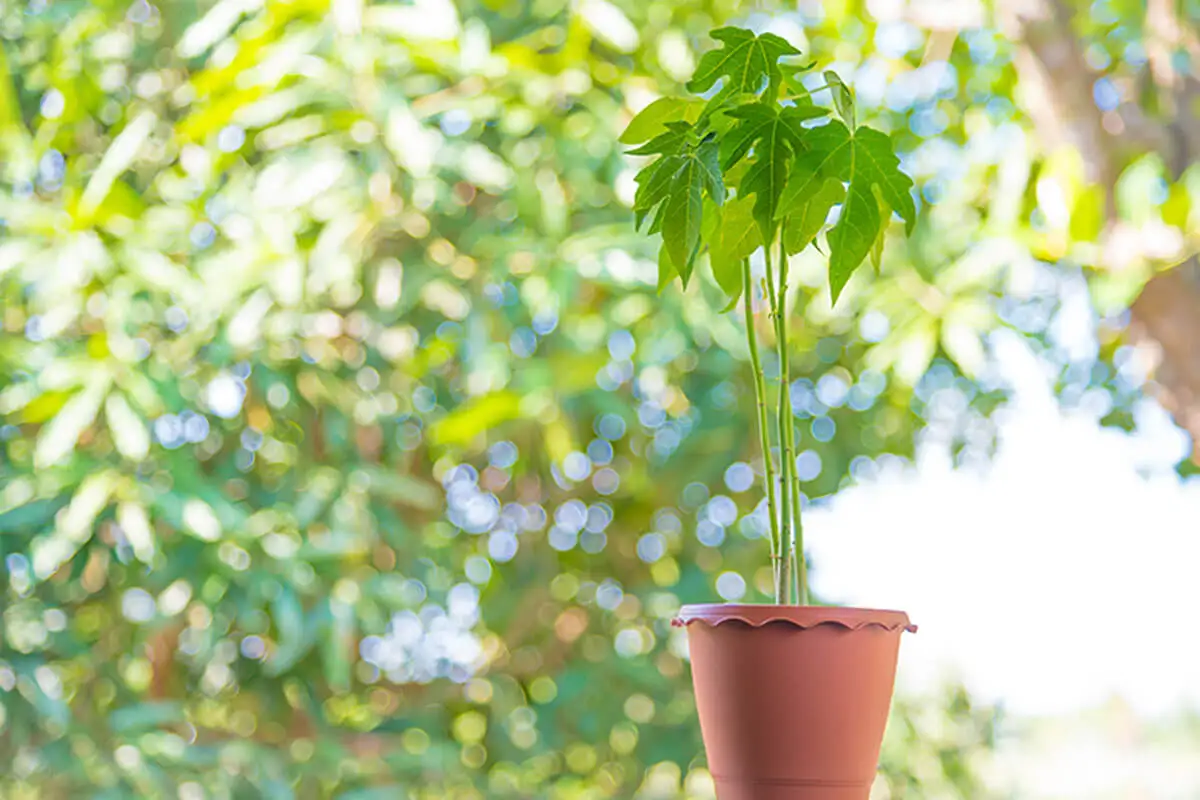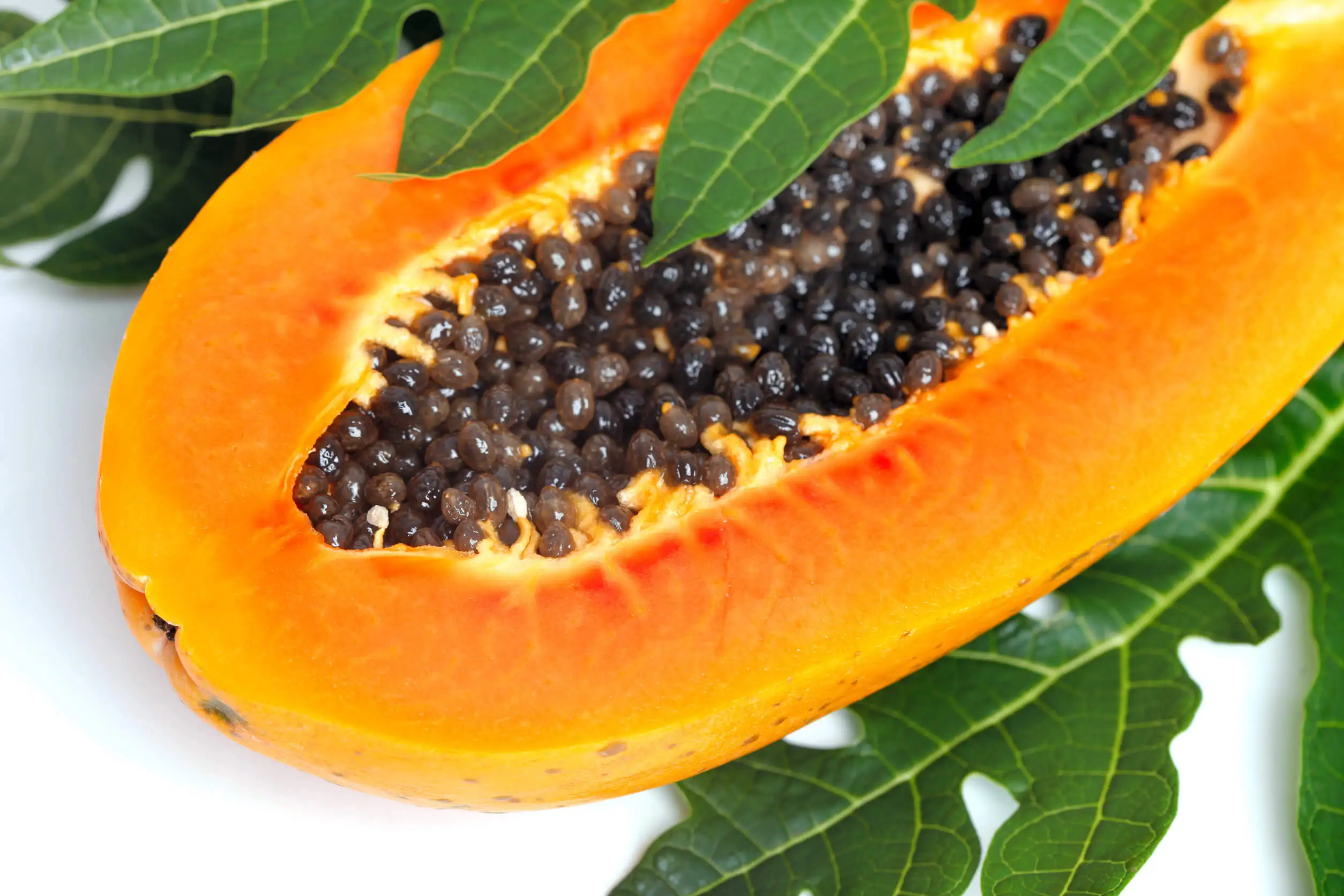How to Grow and Harvest Papaya at Home in Under a Year

Do you want to grow papaya at home? You can! You can do it and get its delicious fruits to accompany your breakfasts just by going out to the patio or garden.
This is because the papaya or Carica papaya is a small tree that grows fast. Even in just a year. Although it requires a temperate or warm climate, being native to Central America it is relatively easy to grow and we tell you how to do it.
The step by step to grow papaya at home
Growing papaya at home is possible and getting it to bear fruit in less than a year is also possible. All you have to do is follow the steps we are going to recommend, which include even the right planting time. Here we go!
1. Plant in early spring
To grow papaya at home and reap its fruits in less than a year you have to observe the season in which you are going to plant. Preferably, it should be done in early spring, specifically between March and April in the northern hemisphere. This is because it is the warmest time of the year.
If there are no seasons in your country, be guided by the months mentioned above. Keep in mind that exposure to low temperatures (below 15 degrees Celsius) are deadly for the papaya tree.
In the case of survival, the fruits could show internal affectation. On the contrary, papaya needs good exposure to sunlight to develop properly.
2. Choose how you are going to plant the tree

The papaya tree is small. Therefore, you can plant it in the garden or in a pot.
You decide, depending on the available space. However, if you opt for the pot, you will find smaller fruits.
Next, we will tell you the steps to follow in each of the cases.
Planting papaya in pots
- Get the papaya seeds. You can do it in a specialized store or take them from a papaya that you have already consumed. Keep in mind that there are female and male seeds, which need each other to germinate a tree that bears fruit. There are others that are hermaphrodite and with them you are going to the fixed at the moment of the sowing.
- Then, disinfect them. They can be predisposed to fungi. It is best to disinfect them with a little white vinegar or with a fungicide that you have bought.
- Let the seeds dry for 24 hours. You do this by placing the seeds in a dry place and pressing them gently with a piece of kitchen towel to absorb their moisture and break their sac, facilitating germination.
- Then, prepare the substrate. It should promote good drainage and be rich in nutrients and organic matter. It is best to prepare one with peat, coconut fiber, worm castings and perlite.
- Sow your seeds. Take them and put them in the pot where you have already prepared the substrate. They should be 1 centimeter deep, keeping a distance of 5 centimeters between each one.
- Water constantly, but without leaving the substrate waterlogged. In addition, you should place the pot in a space where it receives good sunlight. Rotate the pot from time to time to balance the sun bath.
- Choose the best seedlings. You will notice that many seeds germinate and some do not. Also, some seedlings will be stronger than others.
- Place the winner in a separate pot. You will need to transplant it for it to develop properly. You can put it in a larger pot or move it to the garden if you wish.
- Finally, fertilize two weeks after transplanting and you’re done.
Growing papaya in soil
- Purchase the seeds. Disinfect them and leave them as explained above.
- Fertilize the soil with organic matter, such as compost or worm castings.
- Then, plant your seeds, leaving one meter of space between each one. This saves you from transplanting and makes it easier to remove the seedlings that won’t make it to the end.
- Finally, follow the other recommendations. Water constantly and also add some compost when the plant is at a medium size.
3. Continually inspect your papaya trees
Your papaya trees could be affected by pests, diseases and insects that could damage them. To act before a severe problem occurs, it is also recommended to constantly check the leaves and stems.
Consider the following as warning signs:
- Dry and yellow leaves: symptom of diseases.
- Black spots on leaves: could be an infection, for which you will need a fungicide.
- Finally, curled leaves: affected by herbicide.
4. Harvest your papayas
After growing your papaya it’s time to harvest the fruits. Thus, you can bring the papayas down when they reach the degree of ripeness that you consider suitable to carry out your gastronomic recipes. Green papayas can also be used as a vegetable and ripe papayas can be eaten as such or in different dishes.
It is also a good idea to harvest papayas when they are still green to let them ripen indoors. This reduces external hazards that spoil the fruit.

It’s that easy to grow papaya at home!
Growing papaya at home is easier than you might think. Having the right climate is a great advantage for this crop that, from now on, will require minimal but necessary care to succeed.
Remember that papaya consumption has outstanding health benefits. For example, scientific articles have highlighted papaya (fruit, seeds, leaves and roots) for its antibiotic and digestive properties, among others.
Now you can also have all this planted in your garden. However, you have to keep in mind that papaya trees have a short life, no more than five years.
All cited sources were thoroughly reviewed by our team to ensure their quality, reliability, currency, and validity. The bibliography of this article was considered reliable and of academic or scientific accuracy.
- Fitch, M. M. M. (1995). Somatic embryogenesis in papaya (Carica papaya L.). Somatic Embryogenesis and Synthetic Seed I, 260-279.
- Heena, D., & Sunil, T. (2019). Carica papaya: Potential implications in human health. Current Traditional Medicine, 5(4), 321-336.
- Juárez Rojop, IE, (2013). Carica papaya: una planta con efecto terapéutico. Horizonte Sanitario, 12 (2),35-36.[fecha de Consulta 13 de Marzo de 2023]. ISSN: 1665-3262. Recuperado de: https://www.redalyc.org/articulo.oa?id=457845144004
This text is provided for informational purposes only and does not replace consultation with a professional. If in doubt, consult your specialist.








